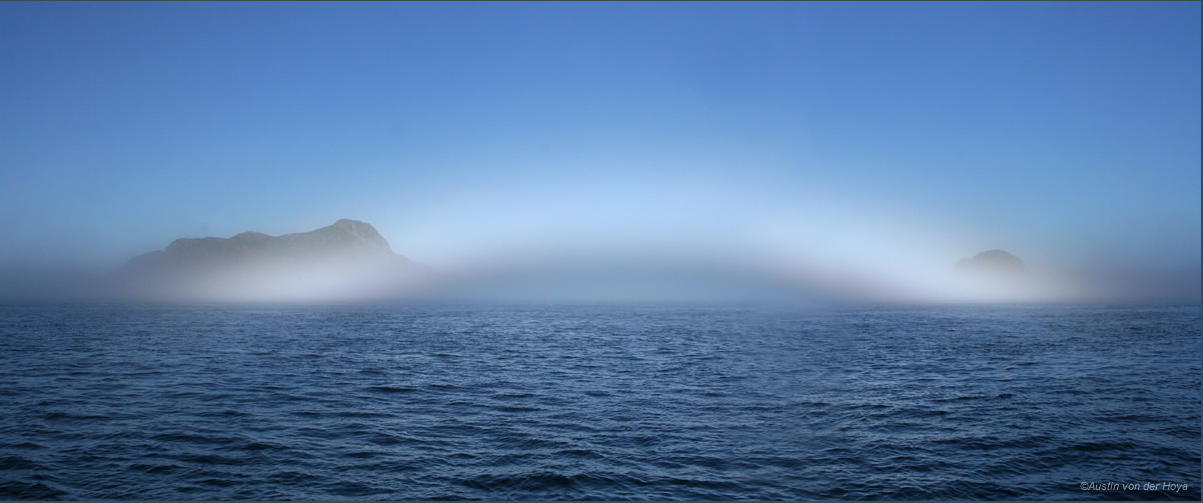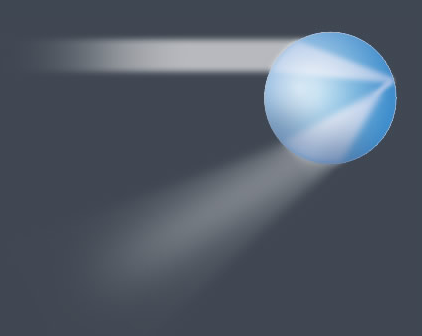Fogbow Bridge, Alaska
Fogbow Bridge, Alaska: A Natural Wonder in the Gulf of Alaska
Have you ever heard of the mesmerizing phenomenon known as the Fogbow Bridge? Located in the Gulf of Alaska, this captivating sight is a must-see for nature enthusiasts and photographers alike. In this article, we will delve into the enchanting details of the Fogbow Bridge and explore the science behind its formation.
A fogbow is a unique atmospheric optical phenomenon that resembles a colorless rainbow. Unlike a traditional rainbow, which is formed by sunlight refracting and reflecting off raindrops, a fogbow is created by the diffraction of sunlight by tiny water droplets suspended in fog or mist. The droplets in fog are much smaller than raindrops, resulting in a fogbow's distinctive pale and almost ghostly appearance.
The Fogbow Bridge, as captured by Austin von der Hoya while fishing for halibut in the Gulf of Alaska, is a particularly remarkable example of this phenomenon. It appears to connect two small islands, creating an ethereal bridge-like effect. The image itself is a testament to the power and beauty of nature.
One interesting characteristic of fogbows is that, like rainbows, they are centered directly opposite the sun. As the sun rises higher in the sky, fogbows tend to sink lower. In the case of the Fogbow Bridge, the sun was approximately 35° high, causing the top of the fogbow to approach the waves below. This positioning adds to the surreal and captivating nature of this natural wonder.
Upon closer examination of the image, you may notice a dark band inside the fogbow. This band is not a photographic artifact but a real feature of fogbows. It represents the gap between the primary and first supernumerary bow. The primary bow is the main arc of the fogbow, while the supernumerary bows are fainter, additional arcs that appear inside it. The visibility of this dark band is enhanced when the fogbow is sharply defined, with droplets of near uniform size.
To truly appreciate the Fogbow Bridge and its mystical allure, it is important to understand the scientific principles behind its formation. The diffraction of sunlight by the tiny water droplets in the fog causes the light waves to bend and spread out. This bending of light creates interference patterns, resulting in the formation of the fogbow's distinctive rings of color. However, due to the small size of the water droplets in fog, these rings are usually faint and lacking in vibrant colors.
While the Fogbow Bridge is a breathtaking sight to behold, it is not limited to the Gulf of Alaska. Fogbows can be observed in various locations around the world, wherever there is fog or mist. They are most commonly seen over bodies of water, such as lakes, rivers, or oceans, where the moisture content is higher.
In conclusion, the Fogbow Bridge in the Gulf of Alaska is a natural wonder that showcases the beauty and complexity of atmospheric optics. Its ethereal appearance and captivating features make it a truly unique phenomenon. Whether you are a nature enthusiast, a photographer, or simply someone who appreciates the wonders of the natural world, witnessing the Fogbow Bridge is an experience that will leave you in awe of the magnificence of our planet.

Fogbow Bridge - This fogbow apparently linking two small isalands was imaged by Austin von der Hoya while fishing for halibut in the Gulf of Alaska. �Austin von der Hoya, shown with permission.

Fogbows, like related rainbows are centered directly opposite the sun and sink as the sun rises. Here the sun was about 35° high and the fogbow top nears the waves.
The dark band inside the bow is real. It is the gap between the primary and first supernumerary bow. It is best seen when the fogbow is one sharply defined by droplets having near uniform size.
Note: this article has been automatically converted from the old site and may not appear as intended. You can find the original article here.
Reference Atmospheric Optics
If you use any of the definitions, information, or data presented on Atmospheric Optics, please copy the link or reference below to properly credit us as the reference source. Thank you!
-
<a href="https://atoptics.co.uk/blog/fogbow-bridge-alaska/">Fogbow Bridge, Alaska</a>
-
"Fogbow Bridge, Alaska". Atmospheric Optics. Accessed on November 26, 2024. https://atoptics.co.uk/blog/fogbow-bridge-alaska/.
-
"Fogbow Bridge, Alaska". Atmospheric Optics, https://atoptics.co.uk/blog/fogbow-bridge-alaska/. Accessed 26 November, 2024
-
Fogbow Bridge, Alaska. Atmospheric Optics. Retrieved from https://atoptics.co.uk/blog/fogbow-bridge-alaska/.